China’s top 10 Archaeological Discoveries in 2015 Announced
From:Chinese Archaeology NetWriter:Date:2016-05-19
The annual selection organized by China Cultural Relics News and China Archaeological Society announced the top 10 Archaeological discoveries in China of the year of 2016 on May 16th.Some 25 archeological projects were narrowed down from 688 excavations to become finalists.
The finds provided new sources to study the development of Chinese civilization with the earliest dating back to 1000,000 years BP.
The judges were from the State Administration of Cultural Heritage, Institute of Archaeology under the Chinese Academy of Social Sciences, Peking University, the Palace Museum and other archaeological institutions.
The final top 10 are:
1.Gantangjing Paleolithic site in Jiangchuan, Yunnan Province
An Early Pleistocene site in Jiangchuan, Yunnan Province has given archaeologists insight into the lives of people in the region Millions of years ago.28 bone artifacts and over 10 wooden artifacts was found there. It may be the world's earliest wooden artifacts dating back to 1000,000 years BP.
A fire-using remain was also found in the site. Fire-woods were put toward the center, which were heavily carbonized near the center part. Besides, there were carbon deposits accumulated in the center.Fossils of seeds ,bones of animals provided evidence of the diet of prehistoric people and how they foraged.
Full Story
http://www.kaogu.cn/en/News/New_discoveries/2016/0419/53627.html

Wood artefacts recovered from the site
2.New Discovery of Liangzhu Culture Found in Jiangzhuang Site Jiangsu ProvinceEvidence of the 5,000-year-old Neolithic civilization of Liangzhu, previously known only to have existed south of the Yangtze River, was found north of the river for the first time in east China's Jiangsu Province.
The discovery breaking the traditional view that the north boundary of Liangzhu culture could not reach to the Yangtze River, providing new materials for all-round and in-depth study on the civilization and society complex of Liangzhu culture, filling up the blank of archaeological discovery of Liangzhu culture in the north of the Yangtze River area.
Full Story
http://www.kaogu.cn/en/News/New_discoveries/2016/0119/52841.html?1463628634

Upper burial in Liangzhu Cultural Cemetery of Jiangzhuang Site
Archaeologists found a Large-Scaled Water management System outside the main settlement of Liangzhu Culture.According to the Stratigraphic Evidence and C14 Dating Data, it was about 5000 years old.
During excavation, ruins of several large man-made mounds were found, which turned out to be dikes that formed three reservoirs.It is the earliest flood control system in the world, which gives a clear comparison to the hydraulic systems of ancient Egypt and Mesopotamia that were mainly built to conduct water such as the irrigation channels and cisterns. It has also indicated the difference between the rice-based civilisation of the East and the wheat-based civilisation of the West.

The plan of ancient Liangzhu city and its large-scale hydraulic system
4.Important Neolithic discoveries in southwest coastal areas in Hainan Island
Three sites including Qiaoshan, Lianziwan in Lingshui County and Yingdun site in Sanya City have been excavated. At the Qiaoshan site, the island's first prehistoric tomb was discovered with human remains inside.It is important for studying the features and DNA of the earliest inhabitants of the island.
Full Story
http://www.kaogu.cn/en/News/New_discoveries/2016/0120/52860.html

Aerial photo of Yingdun site(left)
Pottery unearthed from Yingdun site(right)
New findings have emerged through further excavation of the site. A special standing stone and stone pavement remains were discovered in the center of the courtyard. Some scholars indicated it would be used for ceremony.The building ruins originally constructed in the early Western Zhou period show evidence that a large part of the area had caught fire around the middle period of Western Zhou, and completely abandoned by the late Western Zhou period.Moreover, bronze chariot and the remains of a water system was also found in this site.
Full Story
http://www.kaogu.cn/en/News/New_discoveries/2016/0122/52891.html?1463628725
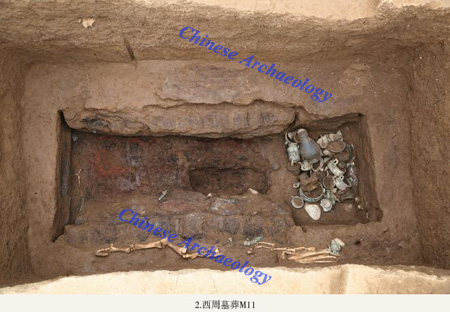
Western Zhou period tomb M11
6.Miners’ cemetery of the Zhou Dynasty found at Tonglvshan, Hubei
The excavation covers an area of 2275 square meters and 132 tombs were excavated. The cemetery was the first ever discovery in the 40- years excavation in the Tonglushan mining site. It is also the very first discovery in the history of mining archaeology.A variety of people were buried in the cemetery regarding their social status and occupations. It is thus vital to cast light upon the labour resource and management of miners in ancient China, during the Spring and Autumn period in particular.
Full Story
http://www.kaogu.cn/en/News/New_discoveries/2016/0517/53950.html?1463628111

Aerial photo of the Sifangtang site
The 2,000-year-old tomb of Haihunhou turned out to be the most complete Western Han Dynasty (206 B.C.- 25 A.D.) cemetery ever found.The marquis's tomb near Nanchang, capital of east China's Jiangxi Province, is one of the few imperial tombs that have not been looted. More than 10,000 artifacts have been unearthed so far.
A seal inside the coffin bore the characters for Liu He, confirming his identity and adding to the weight of evidence already provided by another seal, along with inscriptions on gold coins and bamboo slips. Renctly teeth from the coffin of the marquis are being subjected to DNA analysis.
Full Story
http://www.kaogu.cn/en/News/New_discoveries/2016/0115/52805.html?1463628730
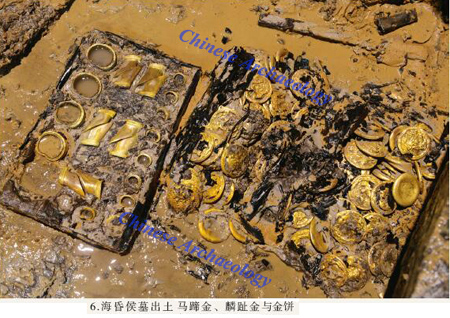
Gold items unearthed from the tomb
8. The new discovery of Luoyang City’s Taiji Hall of imperial palace during Han and Wei Dynasties
The Taiji Hall of ancient Luoyang City during Han and Wei Dynasty was main Hall of imperial palace during Wei Dynasty, which was the first Taiji Hall, playing a significant role in the history of ancient capital.
Full Story
http://www.kaogu.cn/en/News/New_discoveries/2016/0114/52773.html?1463628684
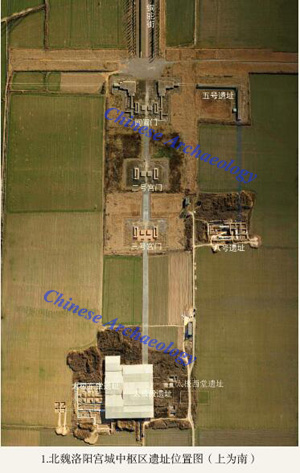
Aerial photo which showed the central area of Luoyang City during Northern Wei Dynasty
9.Liao Dynasty Noble Consort tombs discovered in Inner Mongolia
The two tombs, M1 and M2, appear to be from the same family. M1 appears to be from the middle and late period of Liao Dynasty, M2 appeared to be a Noble Consort of Emperor Shengzong of Liao Dynasty, which was the first discovery of noble Consort of Liao Dynasty.
Full Story
http://www.kaogu.cn/en/News/New_discoveries/2016/0425/53675.html?1463628547
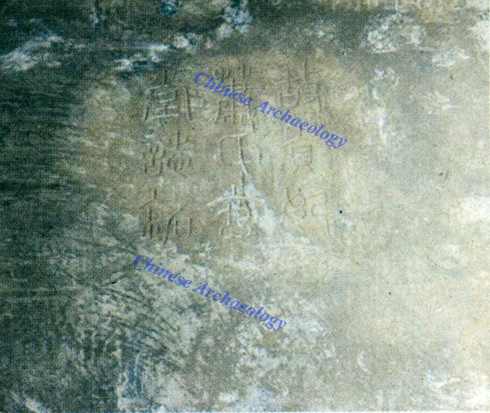
The epitaph of tomb M2
10.Significant Discoveries of the Shipwreck‘Dandong No.1’of Qing Dynasty in Liaoning Province
The archaeological team finally discovered and confirmed the North Sea Naval Cruiser Zhiyuan in the Dandong sea area of north part of the Yellow Sea. This is an important underwater archaeological discovery in China, which provides precious archaeological materials for the investigation of the history of the Sino-Japanese War and the world naval history.
Full Story
http://www.kaogu.cn/en/News/New_discoveries/2016/0118/52825.html?1463629003
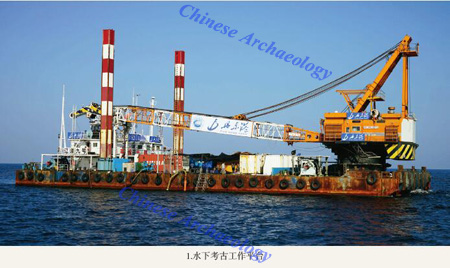
Working plantform for underwater archaeology
The top 10 important archaeological discoveries for 2015 were selected from several hundreds of archaeological excavations conducted last year. The time period ranges from the Paleolithic period to the Qing dynasty. The sites are from 10 provinces. These 10 discoveries cover a rich variety of sites, ranging from the cemetery, water system, Palace foundation, shipwreck remains and so on, some of them are relatively rare archaeological findings. These discoveries provide crucial information and bring new perspective to academic research.
After 26 years, the selection of the top 10 important archaeological discoveries has become an important platform to introduce new archaeological researches to both the academic circle and the public.

